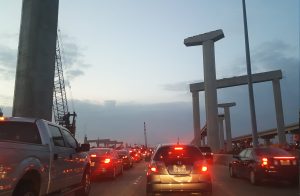
The Baylor Religion Surveys provide some of the best recent data on American religion. The surveys consist of five waves: 2005, 2007, 2010, 2013, and 2017. Data from the latest wave was released last week, including the full 65 page report.
The 2017 wave focuses on
- the religious, political, and ideological values of Trump voters
- mental health and religion in American today
- the intersection of technology and religion
- the geography of religion.
Commuting
As someone who spends a considerable amount of his day most days in his vehicle commuting to work and to worship, I was immediately drawn to the data in the 2017 wave on commuting.
How far do people drive to worship?
According to this survey, “the average church-going American lives 6- 15 minutes from their place of worship” (p.55). More specifically this break down as follows:
- 1-5 minutes: 21%
- 6-15 minutes: 47%
- 16-30 minutes: 23%
- Over 30 minutes: 9%
So What?
Shorter drives are associated with higher rates of attendance.
More than 2 out of 3 church-going Americans travel 15 minutes or less to worship (68%). Those with drive times of 15 minutes or less are more likely to report attending religious services weekly or more. Additionally, this new research shows that as distance increases the likelihood of weekly attendance decreases.
- How far do you drive to church? How far would you be willing to drive to be a part of a community of faith?
- Has your church studied the average drive time (or the average mileage) regular participants travel to attend worship? If so, what was learned from that exercise?